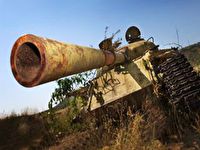 |
|
|
|
Russian missiles will fall into a demographic pit
03.09.2012 — Analysis In five years the Russian defense industry may face the risk of shutting down manufacturing of missiles and tanks because of the increasing shortage of human resources. Factories are short of structural designers, production engineers and, especially, machine-tool operators, as young Russian people give their preference to such professions as cooks, lawyers and sales managers. As the RusBusinessNews columnist has found it out, the blue-collar career does not look appealing to school graduates, either financially or emotionally. Today, defense plants are competing for every professional having engineering education. However, the shortage of workers poses even a more aggravating problem. According to Oleg Palketov, the personnel director at Uraltransmash, OJSC, the deficit in some categories of professions has reached 30%. The plant has enough work for scores of lathe operators and fitters, but there are no skilled people for such work. According to the data from Lyudmila Buguyeva, the department head at the Ministry for General and Vocational Education of the Sverdlovsk region, in 2012 the metalworking professions attracted 6 thousand people who were enrolled in vocational educational institutions to major in them; however, the estimated demand exceeds the actual number one and a half times. By and large, the annual shortfall in enrolment for all blue collar professions exceeds 5 thousand people all over the region. Most of the Russian school graduates prefer to have higher education. Nikolai Babkin, the director of the Ekaterinburg Professional Lyceum named after Kurochkin, states that there are twice as few students at colleges and vocational schools as compared to the number of students studying at higher education institutions. In the meantime, even those who do not seek a diploma of higher education opt for such professions as the cook, hairstylist or trading floor manager rather than the fitter or lathe operator. L. Buguyeva has estimated that educational programs in machine-building account for not more than 10% of the total number, which is definitely insufficient for the industrial Sverdlovsk region. Vladimir Shchelokov, the general director of the Union of Defense Enterprises of the Sverdlovsk region, says that machine-building accounts for at least 20% in the gross regional product and has been growing within the two last years by 20% due to defense orders. The aforesaid imbalance between the supply and the demand for workers calls for urgent measures aimed at refocusing career preferences of young people. Experts anticipate quite a number of problems, though. At most of the factories operating in the Sverdlovsk region, equipment is obsolete and wages are low; only few factories build houses for their employees. Elena Bruk, the deputy general director of Plant No. 9, OJSC, says that their enterprise lost a lot when it decided against keeping up daycare centers and out-of-town camps: they have nothing left to rely on in building their corporate culture. The downside of market development: Russian enterprises started selling non-core assets, while many foreign companies, on the contrary, turned to developing holiday centers and stadiums, daycare facilities and clubs. For example, Japanese companies that are famous for their corporate culture build social facilities, willing to attract young professionals who will be interested in working for these companies. Felix Islamgaliyev, the director of the Regional Resource Center of Professional Education, notes that the federal authorities try to encourage educational institutions to train future professionals for specific enterprises; however, machine-building factories do not participate in selection of students, do not pay scholarships, and do not offer any motivation programs to get students interested in working in their manufacturing facilities. Experts think that this attitude can be explained by the overall instability in the industry. Since 2007 when defense factories moved into the market they have been facing the situation when no one can guarantee them regular orders. Educational institutions are also going through hard times. Inspired by discussions addressing low-quality specialist education, officials made the decision to reduce the training period at vocational schools, shrinking it by half a year and replacing the basic vocational education with a short-term training course. The administration representatives of Ekaterinburg vocational schools say that such innovations can knock out vocational education. With insufficient financing and outdated school facilities, the legislative requirements cannot be fulfilled. However, the hardest blow to hit vocational schools is expected in five years. According to the data from Mikhail Vainshtein, the advisor of the Minister for General and Vocational Education of the Sverdlovsk region, by 2016 the number of Russian people approaching the employable age will decrease by 5 million people. Experts warn that the demographic pit will, first of all, swallow up vocational schools, which are already quickly reducing in their numbers, including those that are located in Ekaterinburg. The big question is who is then going to work at defense factories and fulfill government orders that are steadily growing. Vladimir Terletsky |
| Regions | Project participants | Investment projects | Consulates and Trade Offices | News and Analysis | About the Project |
|
© RusBusinessNews, 2009. All rights reserved. Establishing a hyperlink to RIA RusBusinessNews is required for using any of the material published on this website. News and analytical reviews are translated into foreign languages by the TRANSLIT Translation Agency |
«Sum of technologies»® Web design Site promotion |